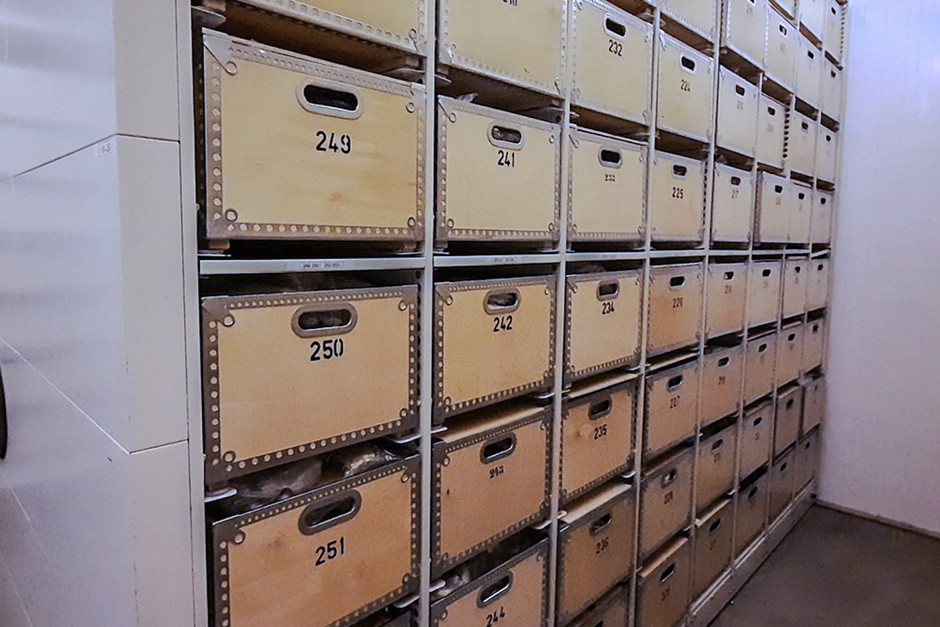History
It is of great importance for studies on environmental contaminants, but specimens have also been valuable when studying biological diversity and the effects of noxious substances on threatened animal species (to name a few fields of research).
The ESB has one of the oldest and greatest collections of environmental specimens in the world. The oldest samples were collected in the mid-1960s, with species having been sampled on an annual basis from certain localities ever since.
New routines regarding loans from the ESB
New routines regarding loans from the ESB were established in April 2021.
Applications for loans of specimens will now be processed five times per year.
More information on how to request a loan from the ESB can be found on the page Loans from the Environmental Specimen Bank.
Storage
The majority of the specimens are stored at a temperature of -25°C, with a smaller portion of the collection being stored at -80° C. Materials such as feathers, bones, moss and eggshells are stored dry, at room temperature.
Samples in the ESB
The ESB holds samples of various species representing different ecosystems; fish, blue mussels, eggs from seabirds, as well as mammals from the aquatic environments (marine and limnic), along with moose, brown bear, Eurasian wolf, wolverine, and Eurasian lynx (to name a few) from the terrestrial environment. Birds of prey are also collected, representing different types of environments depending on species.
Smaller animals like fish and blue mussels are stored as whole individuals while tissue samples from different organs are collected during necropsies of larger species.
Swedish contaminant monitoring
A large portion of the specimens stored in the ESB are collected through the National Environmental Monitoring Programs. These long and continuous series of biological samples are primarily used for:
- measuring levels of known environmental contaminants
- searching for new environmental contaminants
- following how levels of newly discovered environmental contaminants have changed over time
- monitoring harmful effects of environmental contaminants in organisms
The ESB also stores older samples of animal tissues and organs donated from various research projects.
Rare and threatened species
Swedish legislation on hunting and shooting rights contain certain regulations, specially intended to further nature conservancy, education and research. The Game Act states that certain rare and partly threatened birds and mammals become state property if they are killed, trapped, or found dead, irrespective of any hunting rights involved.
These animals (or parts of them) are sent to the Swedish Museum of Natural History where tissue samples from species of interest and/or particular value are continuously prepared and stored in the ESB.
Environmental Specimen Bank Group (IESB)
The International Environmental Specimen Bank Group (IESB) External link. promotes world-wide development of techniques and strategies for environmental specimen banking. The IESB includes both established Environmental Specimen Banks (ESBs) and new ESBs, that are in the planning stages.
External link. promotes world-wide development of techniques and strategies for environmental specimen banking. The IESB includes both established Environmental Specimen Banks (ESBs) and new ESBs, that are in the planning stages.
IESB, International Environmental Specimen Bank Group External link..
External link..

